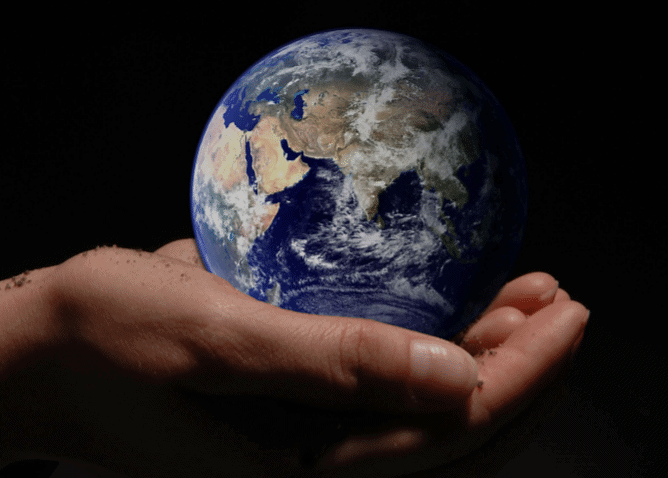Menu
Blog
Guide to Recycling Water
- By Peter Wood
- February 8, 2021
- 9:55 am

What is Water Recycling?
Water recycling is a process in which wastewater undergoes a secondary treatment, and then treated water is reused for various purposes.
Water recycling provides an opportunity to conserve fresh water sources that would have otherwise been lost from the water cycle back into potable or non-potable use.
In addition, it helps maintain the quality of raw waters by removing some pollutants before they reach natural water bodies such as lakes, rivers, oceans and aquifers which will be used in drinking sources. It also helps handle wastes from domestic activities so that these materials don’t create problems for both environment and humans when they are disposed properly in landfills or through incineration processes.
How Does Water Recycling Work?
The first step in the process of water recycling is a treatment that includes several steps for both physical and chemical processes. It uses a series of filters that remove materials such as metals, food waste, oils and other large particles from the wastewater before it’s disinfected. The water can also be treated with chlorine dioxide to ensure any harmful microorganisms are removed from the water.
Chemical additives used during this step include: sodium hypochlorite (chlorine), hydrogen peroxide, ozone gas and sodium bisulphate. In some cases, organic chemicals such as benzene, toluene and xylene may also be added so they don’t enter back into the environment through effluent.
After all these processes, water recycling facilities use reverse osmosis units to remove impurities such as nitrates and phosphates from the wastewater. The treated water is then used for irrigation purposes or discharged into rivers or oceans if it can’t be reused at all.
Benefits of Recycling Water
Recycled water has many benefits that make it an important resource in our world today.
Water recycling can save people money by requiring less infrastructure than using fresh water sources, help protect the environment by reducing stress on bodies of fresh water, and also protect human health by making sure that all recycled waste products are removed from the water before it goes back into rivers, lakes, or streams.
Many places around the world are faced with the problem of having enough fresh water to drink and use for other purposes. By recycling used water, people can find ways to solve this issue while saving money at the same time. There are many different kinds of recycled water, but one main category is called potable reuse. This means that recycled wastewater can be used directly – without any extra processing or cleaning steps – as drinking water in certain circumstances.
Another kind of recycled water is non-potable reuse, which refers to using treated wastewater for things like irrigation , flushing toilets , washing cars, filling swimming pools , and also some industrial uses . Non-potable reused water should not just go back into rivers, lakes or streams because it will still contain chemicals from cleaning it.
Water recycling is an option to explore in order to solve the problem of needing drinking water for everyone, even if there are times when fresh drinking water does not exist or cannot be used. The more this idea spreads, the better it will be able to help our world!
Core Reasons Recycling Water Is Good For The Environment
Recycling can bring costs down, ensuring that agricultural areas have enough resources to sustain themselves. This reduces energy use, introducing a new wave of cost savings. The water recycling revolution is keeping resources intact through increasingly innovative methods. Recycled water supplies have never been as accessible as they are today.
The Planet Naturally Recycles Water, But Technology Improves The Process
The planet is an accomplished water recycler in its own right, removing contaminants through evaporation before returning relatively clean water to the earth. Technology can now improve and speed up that process. Wastewater reclamation technology can now extract potable water through natural and engineered processes. Preliminary treatment methods use multiple steps to screen out solids and grit before targeting settable scum. Secondary processes then remove suspended solids using fixed-media filtration and disinfection as a viable alternative to activated sludge processes.
Water Is The Most Important Element On Earth
Every living being relies on water for its survival. Without it, there can be no life, but global warming is resulting in crippling droughts all around the world. Water recycling is currently protecting valuable ecosystems that would otherwise die thanks to rainfall changes. Droughts cut off the food supply, shrinking habitats, and damage flora. They can even lead to the extinction of important species. Water recycling adds a water source, preventing diversion from core biomes, saving species directly and indirectly.
Reusing Water Benefits Human Resource Management
Growing water scarcity results in job loss, waterway damage, and economic challenges, all of which can be overcome through an innovative recycling strategy. The ramifications of water shortages stretch throughout the economy, leaking into everything from agricultural losses to relief costs. Water recycling places resources back into the economy while simultaneously bringing important financial savings to industries that rely on process water. It also enhances sanitation, so it’s a key way to prevent the spread of disease and toxins from industrial by-products.
Protecting Water Sources
Recycled water becomes an important part of the hydraulic cycle, improving water quality, decreasing disposal costs, and replenishing groundwater basins. Drought can remove important minerals from the soil, making recovery difficult or impossible. Agricultural heritage is damaged, and biodiversity degrades while livestock is left without drinking water. Water reclamation helps prevent a reduction in soil quality and the death of vegetation that, in turn, prevents erosion. It enhances wetlands, irrigates soil, and feeds important water by-products such as electricity and food production.
The average wastewater treatment facility discharges 1.35 billion gallons of effluent a day. Every millimetre is a potentially valuable opportunity for water reclamation. With only a small percentage of all the world’s water being available for human consumption and climate change reducing our resources, there is no era as important for water reclamation as today.
How to Set up Water Recycling Systems
There are several different types of systems available for residential use. The most common ones include ‘first flush diverters’, activated carbon filters, sand media filters, reverse osmosis purifiers and ultraviolet disinfection devices.
First flush diverters are connected before an external hard piped system so they divert any initial wastewater away from the storage tank. Activated carbon filters use a porous substance to remove organic residue and chlorine from the water, leaving it free of odour and taste. Sand media filters have sand grains that trap microscopic particles from wastewater so they don’t enter the storage tanks. Reverse osmosis purifiers have semi-permeable membranes that separate most contaminants from clean water in a process known as ‘filtration’. Ultraviolet disinfection devices purify water using UV light with little or no ongoing costs after installation.
Here at Wychwood Water Systems, we are experts in designing, manufacturing, installing & commissioning, servicing, and refurbishment of water recycling systems and encourage you to view our services to find the ideal water recycling system for you.
If you have any other questions or would like to learn more from our experts, we welcome you to contact us today.
Share on facebook
Facebook
Share on google
Google+
Share on twitter
Twitter
Share on linkedin
LinkedIn
Share on pinterest
Pinterest

